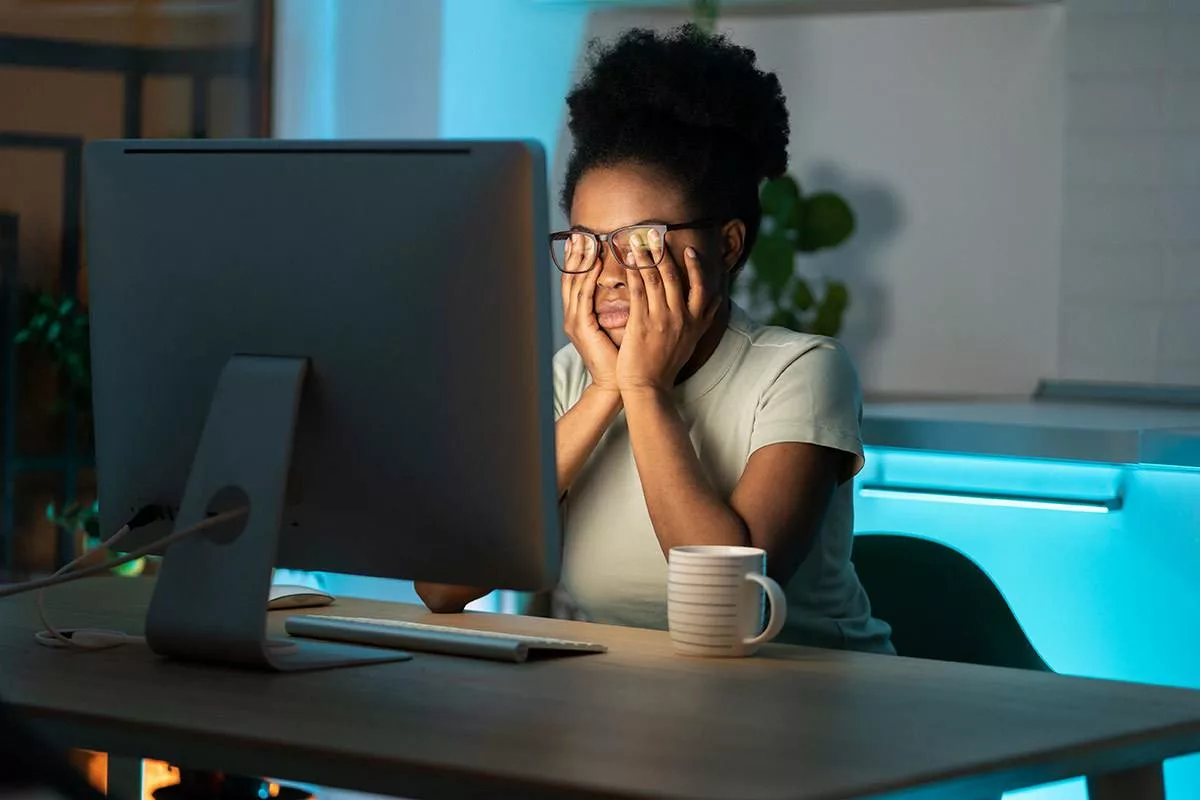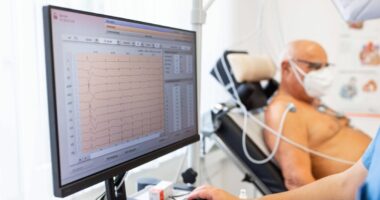Share this @internewscast.com

By adopting these practical solutions, we can reduce discomfort associated with computer vision syndrome and ensure our eyes remain healthy in this digital era.
Immersed in our digital lives means constantly using devices like computers, smartphones, and tablets. At the same time, these have made life more convenient and presented us with computer vision syndrome (CVS) or digital eye strain issues.
These Various Factors Can Cause CVS
Prolonged use of digital screens for work or pleasure is one of the primary causes, along with improper posture while using these devices often leads to frequent eye strain. Long periods without breaks from viewing screens without adequate viewing distance or ergonomic support also strain our eyes; insufficient lighting conditions and exposure to blue light emitted by screens further compound the issue. Using screens in dim light also affects our eyes. Lack of moisture in the eyes can also cause computer vision syndrome.
Understand The Symptoms
Youngsters usually need to be made aware of this problem. It would be best to detect CVS symptoms early and treat them immediately. This eye strain can cause fatigue, discomfort and heaviness in the eyes. Due to CVS, tear production becomes insufficient, and it may result in a dry, itchy, and gritty feeling. Other symptoms include headaches and neck and shoulder pain when using digital gadgets. You may see duplicate images when switching focus between distant locations and screens.
4 Practical Solutions To Alleviate CVS
- Adopting certain lifestyle modifications may prove helpful in combating CVS: An ergonomic workspace is vital; providing comfortable chair height, placing a monitor at eye level, and adjusting lighting without creating glare can promote healthier posture and more ergonomic working practices.
- Adopting the 20-20-20 rule: Taking a 20-second break every 20 minutes by looking away at 20 feet each time helps ease eye strain significantly. This is considered the best method to reduce eye fatigue.
- We normally blink 12-15 times in a minute: But while using the screens, due to concentration, it reduces to 5-7 times only. So, blinking regularly while using digital devices can help reduce dryness and vision problems, including dry eye syndrome.
- Font size to reduce eye strain is recommended: blue light filters or anti-reflective computer glasses may further minimize any damage from blue light exposure. You can use lubricating drops after every 2-3 hours while using the screens. This would help your eyes provide moisture and avoid dryness.
Despite following all these above methods, the screens are uncomfortable, and you must consult an eye specialist before they become a severe problem.
Summary:Eye health is crucial as we move through our digital lives. By adopting these practical solutions, we can reduce discomfort associated with computer vision syndrome and ensure our eyes remain healthy in this digital era.














